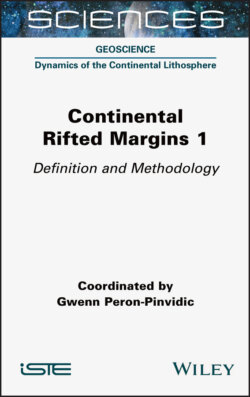Читать книгу Continental Rifted Margins 1 - Gwenn Peron-Pinvidic - Страница 22
Case example: The Basin and Range Province
ОглавлениеThe Basin and Range Province is a region covering a vast area in the western United States and northwestern Mexico (Figure 1.9). The physiography is defined by changes in elevation, alternating between north–south oriented, narrow-faulted mountain chains (15–20 km wide) and flat arid valleys (~30 km wide). The subparallel mountain ranges correspond to the crests of fault-blocks bounded by normal faults developed from east–west-directed extension. The blocks are exposed to erosion, leading to sediment transport to the adjacent valleys. However, the climate is so arid in most of the province that the runoff water is not significant enough to proceed to long-distance transport of the sediments. This special setting results in the building of thick alluvial fans, which led to the definition of the famous “Gilbert deltas” (Gilbert 1928).
Figure 1.8. Illustration of the “wide rift mode” (source: Buck 1991)
The tectonic reason for the formation of the province is interpreted to be due to crustal buoyancy forces and stress changes at plate boundaries (Sonder and Jones 1999). The entire region is characterized by high heat flow, slightly thinned continental crust (27–35 km) and a relatively flat Moho with reduced upper mantle P wave velocities (7.5–8.0 km s-1) (Holbrook 1990; Gilbert 2012). Structurally, the region displays distinct modes of deformation (high-angle faulting, low-angle detachment and metamorphic core complexes) and the rocks have experienced syn-deformational high-grade metamorphism (amphibolite, granulite, eclogite facies) (Axen et al. 1993). The observations led to the development of the simple shear model (Wernicke 1981, 1985) (see Chapter 2) where a detachment surface separates an upper plate setting (hanging wall) from a lower plate setting (footwall), which are mostly made of upper crust dissected into blocks by high-angle normal faults and highly-deformed lower crust, respectively (Davis and Lister 1988; Lister and Davis 1989).
Figure 1.9. Topographic map of the Basin and Range Province. Elevation and bathymetric map is based on the NOAA Etopo1 (Amante and Eakins 2009). Cross-sections modified from Brun et al. (2018), based on Miller et al. (1999) and Spencer and Reynolds (1990) to illustrate the combined effects of detachment, decollement and normal faults into the formation of the Basin and Range physiography
